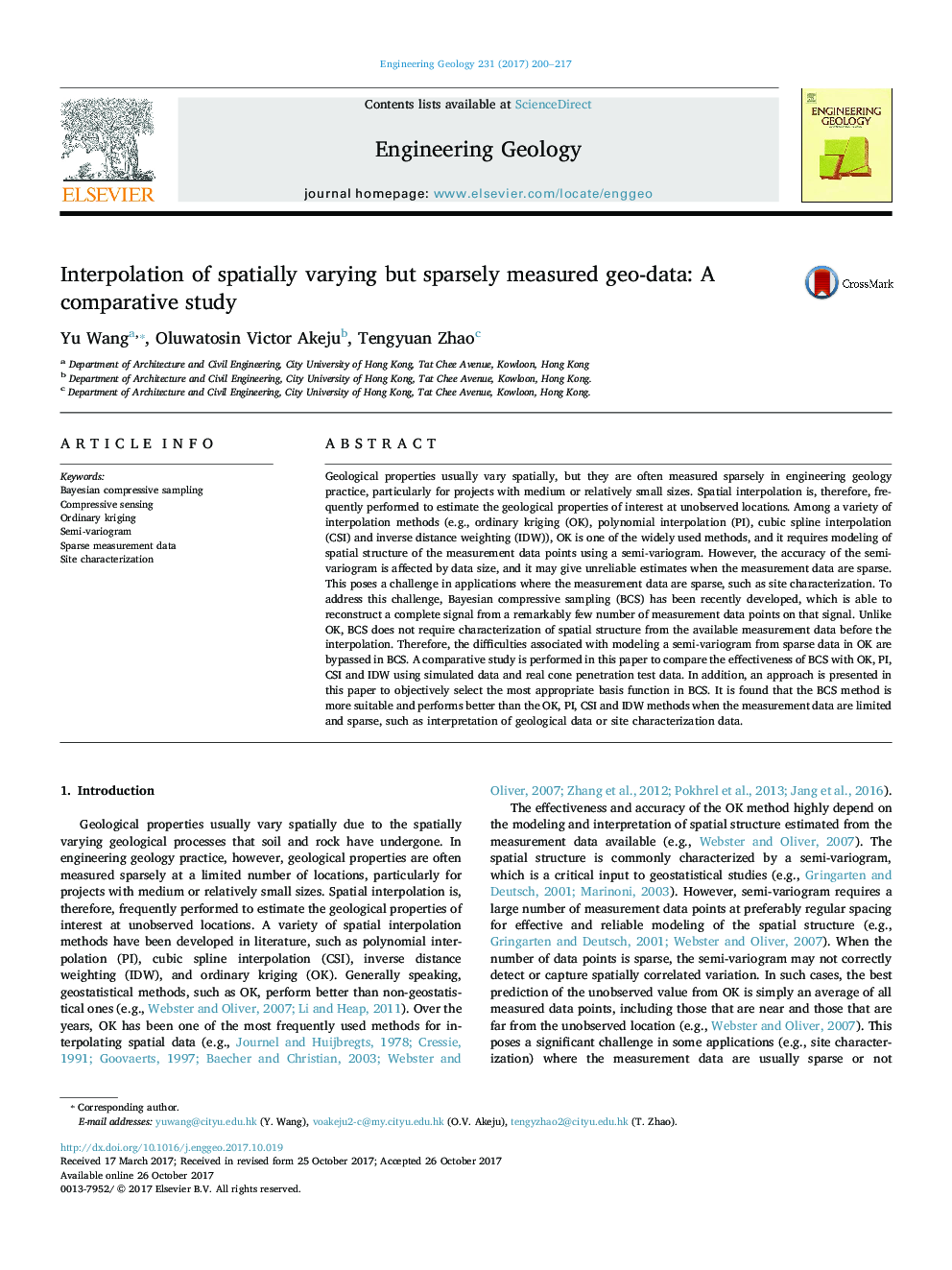| کد مقاله | کد نشریه | سال انتشار | مقاله انگلیسی | نسخه تمام متن |
|---|---|---|---|---|
| 8916032 | 1641754 | 2017 | 18 صفحه PDF | دانلود رایگان |
عنوان انگلیسی مقاله ISI
Interpolation of spatially varying but sparsely measured geo-data: A comparative study
ترجمه فارسی عنوان
تطبیق داده های جغرافیایی متفاوت اما جزیی اندازه گیری: یک مطالعه مقایسه ای
دانلود مقاله + سفارش ترجمه
دانلود مقاله ISI انگلیسی
رایگان برای ایرانیان
کلمات کلیدی
نمونه برداری فشاری بیزی، سنجش فشاری، کریگینگ معمولی نیمه واریوگرام، داده های اندازه گیری انعطاف پذیر، خصوصیات سایت،
موضوعات مرتبط
مهندسی و علوم پایه
علوم زمین و سیارات
مهندسی ژئوتکنیک و زمین شناسی مهندسی
چکیده انگلیسی
Geological properties usually vary spatially, but they are often measured sparsely in engineering geology practice, particularly for projects with medium or relatively small sizes. Spatial interpolation is, therefore, frequently performed to estimate the geological properties of interest at unobserved locations. Among a variety of interpolation methods (e.g., ordinary kriging (OK), polynomial interpolation (PI), cubic spline interpolation (CSI) and inverse distance weighting (IDW)), OK is one of the widely used methods, and it requires modeling of spatial structure of the measurement data points using a semi-variogram. However, the accuracy of the semi-variogram is affected by data size, and it may give unreliable estimates when the measurement data are sparse. This poses a challenge in applications where the measurement data are sparse, such as site characterization. To address this challenge, Bayesian compressive sampling (BCS) has been recently developed, which is able to reconstruct a complete signal from a remarkably few number of measurement data points on that signal. Unlike OK, BCS does not require characterization of spatial structure from the available measurement data before the interpolation. Therefore, the difficulties associated with modeling a semi-variogram from sparse data in OK are bypassed in BCS. A comparative study is performed in this paper to compare the effectiveness of BCS with OK, PI, CSI and IDW using simulated data and real cone penetration test data. In addition, an approach is presented in this paper to objectively select the most appropriate basis function in BCS. It is found that the BCS method is more suitable and performs better than the OK, PI, CSI and IDW methods when the measurement data are limited and sparse, such as interpretation of geological data or site characterization data.
ناشر
Database: Elsevier - ScienceDirect (ساینس دایرکت)
Journal: Engineering Geology - Volume 231, 14 December 2017, Pages 200-217
Journal: Engineering Geology - Volume 231, 14 December 2017, Pages 200-217
نویسندگان
Yu Wang, Oluwatosin Victor Akeju, Tengyuan Zhao,
